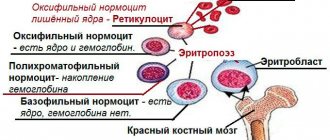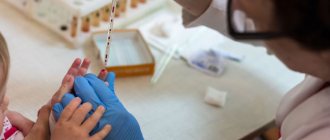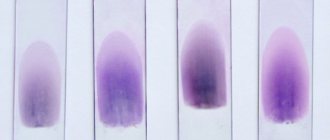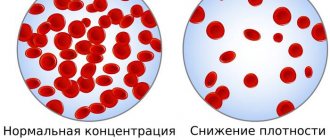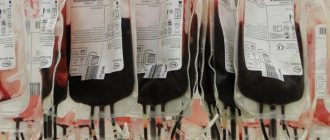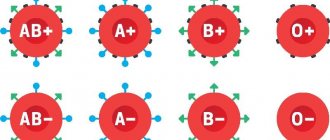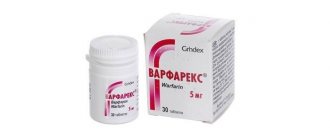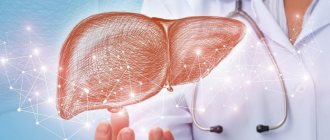Taking blood from children
Taking blood from children
The younger the child, the more difficult it is for him to describe his sensations and localize the pain. Parents often show concern only if the child’s activity decreases, loss of appetite, or rise in body temperature. On the other hand, most childhood diseases are reflected in changes in blood counts, which, together with an examination and assessment of the child’s condition, will allow the doctor to make the correct diagnosis.
However, taking blood from children for testing is quite difficult, both technically and psychologically. Difficulties are associated both with compliance with the requirements for preparing for research and with the procedure itself.
The main difficulties are associated with obtaining a sufficient volume of blood, especially in children in the first three years of life. Their capillary network is poorly developed, the vessels and their lumen are small, and the blood has increased viscosity, because contains a high concentration of cells. The maximum volumes of blood that can be taken from a child at one time mainly depend not on age, but on his weight (Table 1). Unreasonably frequent and extensive studies lead to changes in blood parameters (decrease in hemoglobin, hematocrit, red blood cells, etc.) without a pathological reason.
The disadvantages of capillary blood sampling are associated with a greater likelihood of distorted results or the need for repeated sampling. This is due to:
- destruction of blood cells during collection,
- formation of microclots in the sample,
- the presence of intercellular fluid in the sample,
- contamination of the sample with skin microflora,
- short sample shelf life.
It is important to understand that taking blood from a vein is less painful than taking blood from a finger and is free of the negative effects described above. To facilitate the collection of venous blood, the child should be kept warm; parents rhythmically squeeze and unclench the child's wrist to facilitate blood flow. The child must get used to the room and calm down. It is advisable to give him 50-100 ml of clean water without gas half an hour before taking blood. Try to draw blood in the first half of the day, 4-6 hours after a light morning breakfast.
WHO does not recommend more than two attempts to collect venous blood from children and newborns. If for some reason it was not possible to draw blood, depending on the criticality of obtaining test results, you should postpone it until the next day.
To collect blood from a vein in children, the same tubes are used as in adults. The volume of each tube is 4-5 ml. In departments of newborns and young children, special pediatric tubes are used with the same fillers as regular tubes, but with a volume of 1-2 ml.
| Patient weight, kg | Maximum rate of blood collection at one time, ml | Maximum rate of blood collection for the entire period of hospitalization, ml |
| 2,7–3,6 | 2,5 | 23 |
| 3,6–4,5 | 3,5 | 30 |
| 4,5–6,8 | 5 | 40 |
| 7,3–9,1 | 10 | 60 |
| 9,5–11,4 | 10 | 70 |
| 11,8–13,6 | 10 | 80 |
| 14,1–15,9 | 10 | 100 |
| 16,4–18,2 | 10 | 130 |
| 18,6–20,5 | 20 | 140 |
| 20,9–22,7 | 20 | 160 |
| 23,2–25,0 | 20 | 180 |
| 25,5–27,3 | 20 | 200 |
| 27,7–29,5 | 25 | 220 |
| 30,0–31,8 | 30 | 240 |
| 32,3–34,1 | 30 | 250 |
| 34,5–36,4 | 30 | 270 |
| 36,8–38,6 | 30 | 290 |
| 39,1–40,9 | 30 | 310 |
| 41,4–43,2 | 30 | 330 |
| 43,6–45,5 | 30 | 350 |
Table 1. Maximum norms for blood collection at one time and for the entire duration of hospitalization in children under 14 years of age
Organization of the preanalytical stage during centralization of laboratory research. The recommendations were developed by a team of authors: Doctor of Medical Sciences A.A. Kishkun, Doctor of Medical Sciences, Professor A.Zh. Gilmanov, Doctor of Medical Sciences, Professor T.I. Dolgikh, D.A. Grishchenko, T.G Skorokhodova
Taking blood for laboratory tests in pediatric practice. Laboratory diagnostics - 2013, No. 3. — pp. 40-43
Rules for collecting biomaterial
Determination of amino acids and acylcarnitines in blood using tandem mass spectrometry
Blood is collected on a standard filter card (No. 903), which is used to screen newborns for phenylketonuria. Blood can be either capillary (from a finger) or venous. It is necessary to saturate the selected area on the filter well! The filter card must clearly indicate the full name, who and where the patient was referred from, date of birth, date of sample collection and telephone number of the attending physician. The sample is dried for 2-3 hours at room temperature (heating and exposing the sample to direct sunlight is unacceptable) and is sent to the laboratory with a completed application form. It is advisable to attach an extract from your medical history.
Determination of oxysterols in blood plasma (Niemann-Pick disease type C)
To determine oxysterols in blood plasma, strict adherence to the rules for transporting biomaterial is necessary. Collect 5-7 ml of the patient’s blood in a test tube with an EDTA preservative (usually a purple cap), carefully invert the tube several times to mix with the preservative, but do not shake to avoid hemolysis. Clearly and legibly sign the patient's Last Name, First Name, and the date of blood collection. Deliver the test tube with blood within 24 hours at a temperature of +2-+8 degrees Celsius, under no circumstances should it be frozen! Transport blood in a thermos with food ice (1-2 ice cubes) or in a container with a cold pack.
If blood cannot be delivered within 24 hours, additional manipulations with the blood must be performed in the laboratory where it is collected. After mixing with the preservative, the tube must be centrifuged for 10 minutes at 1000 g. After centrifugation, collect the plasma (supernatant) into an Eppendorf tube (two tubes, if possible), without touching the sediment! Next, the blood and tubes with plasma must be frozen and possibly stored at -20 degrees Celsius. Such samples must be sent frozen.
Be sure to send to the laboratory a completed clinical phenotype registration card or an extract from the medical history. A special map can be downloaded in the “Documents” section
Isofocusing of transferrins (diagnosis of congenital disorders of glycosylation)
2-3 ml of the patient's blood is collected either into a tube WITHOUT PRESERVATIVE (usually a red cap) or into a tube WITH HEPARIN (usually a green cap). The contents of the tube must be mixed, but not shaken, to avoid hemolysis; the tube must be closed and labeled. Transport blood in a thermos with food ice (1-2 ice cubes). Blood must be delivered to the laboratory no later than 24 hours after collection. Blood should not be frozen! It is advisable to attach an extract from your medical history.
If blood cannot be delivered within 24 hours, it is necessary to perform additional manipulations with the blood in the laboratory where it is collected. After mixing with the preservative, the tube must be centrifuged for 10 minutes at 1000 g. After centrifugation, collect the serum/plasma (supernatant) into an Eppendorf tube (if possible, two tubes), without touching the sediment! Next, the serum/plasma must be frozen and possibly stored at -20 degrees Celsius. Such samples must be sent frozen.
This analysis is possible on the material of blood stains on a filter card. (The rules for collecting blood on the filter are specified in the “General Recommendations” section)
Determination of ceruloplasmin (diagnosis of Wilson-Konovalov disease and Menkes disease)
2-3 ml of the patient's blood is collected in a test tube without a preservative (usually a red cap). The contents of the tube must be mixed, but not shaken, to avoid hemolysis; the tube must be closed and labeled. Transport blood in a thermos with food ice (1-2 ice cubes). Blood must be delivered to the laboratory no later than 24 hours after collection. Blood should not be frozen. It is advisable to attach an extract from your medical history.
If blood cannot be delivered within 24 hours, it is necessary to perform additional manipulations with the blood in the laboratory where it is collected. After mixing with the preservative, the tube must be centrifuged for 10 minutes at 1000 g. After centrifugation, collect the plasma (supernatant) into an Eppendorf tube (two tubes, if possible), without touching the sediment! Next, the blood and tubes with plasma must be frozen and possibly stored at -20 degrees Celsius. Such samples must be sent frozen.
Determination of very long-chain fatty acids, cholesterol isomers (diagnosis of peroxisomal diseases, Smith-Lemli-Opitz syndrome)
5-7 ml of blood from the patient and parents (on an empty stomach) is collected in a test tube with a preservative (EDTA). The contents of the tube must be mixed, the tube must be closed and signed. It is recommended not to eat bananas, nuts, chocolate and cheese 3 days before the test. Transport blood in a thermos with food ice. Blood must be delivered to the laboratory no later than 24 hours after collection.
If blood cannot be delivered within 24 hours, it is necessary to perform additional manipulations with the blood in the laboratory where it is collected. After mixing with the preservative, the tube must be centrifuged for 10 minutes at 1000 g. After centrifugation, collect the plasma (supernatant) into an Eppendorf tube (two tubes, if possible), without touching the sediment! Next, the blood and tubes with plasma must be frozen and possibly stored at -20 degrees Celsius. Such samples must be sent frozen.
Why do they take blood from a vein?
In recent years, modern laboratories have used only venous blood for research. Previously, capillary blood from the ring finger was used for some tests, for example, in the case of a general blood test. With this method of collecting biomaterial, microthrombi often formed, which made it difficult to calculate the studied parameters.
Venous blood collection using vacuum systems
Taking blood from a vein provides comprehensive information about the state of health and allows you to prescribe the necessary instrumental examination methods to clarify the diagnosis. The most frequently used clinical methods are those that reveal the nature of the pathological process, allow the treatment of the disease to be adjusted, and are also used for screening and preventive examinations.
- A general blood test reveals the cellular composition of the blood and ESR. Prescribed for the diagnosis of inflammatory diseases, infections, blood pathologies. Refers to a mandatory examination method during annual medical examinations.
- Blood biochemistry determines the main biological indicators (glucose, proteins, electrolytes, enzymes, lipids) and indicates the pathology of the liver, heart, blood vessels, and the development of oncology.
- Hormonal background studies the level of hormones and the function of the endocrine, digestive system, and metabolism.
- The immunological status determines the state of cellular and humoral immunity, the development of allergic reactions.
Donating blood from a vein is required when diagnosing any disease. Laboratory tests are safe and painless methods for identifying pathological processes in the body.
Where can I get a general blood test?
The blood test can be done at a medical laboratory, hospital, or clinic. If your situation requires it, this can also be done right at home.
Results of the same blood test
May vary slightly from lab to lab. This is due to the use of different dosing techniques. The results of the examination will be more or less the same in any case, but it is recommended to have all blood tests done in one laboratory when it comes to regular check-ups to monitor your health. The KDL Clinic has everything you need to take a test.
Taking blood for research
Many factors can influence the result of a blood test, so it is recommended to refrain from taking medications before taking biomaterial. It is also often advised not to even eat food. If it is almost impossible to predict the effect of medications on the body, then due to the absorption of food components, after taking it, it guarantees a shift in hormone levels or deprives the sample of transparency.
Physical overload before analysis can lead to both biochemical and hormonal changes, and alcohol has acute and chronic effects on metabolism and its processes. Smoking, the menstrual cycle in women, receiving physiotherapeutic procedures, time of day, and so on can also affect the result.
Recommendations that should be taken into account when taking blood biomaterial for analysis.
- It is best to take the test in the morning before 10:00. Before taking blood, do not eat for about 8 hours, but do not allow more than 14 hours of bowel rest. You can drink as usual.
- When taking a course of medications, you should consult with your doctor about the need for analysis during this period. Or find out whether it is possible to stop taking medications before taking biomaterial.
- Stop drinking alcoholic beverages at least a day before. Stop smoking for an hour before blood sampling.
- The results of the analysis may be influenced by physical activity and emotional overload. Therefore, they are also advised to be excluded.
Detailed description of the study
Reticulocytes are young red blood cells (erythrocytes). Reticulocytes are formed in the bone marrow from normoblasts that have lost their nucleus. It takes several days to ripen, usually 4-5. The maturation process begins in the bone marrow and then continues in the peripheral blood. The formation of red blood cells and their forms depends on the hormone erythropoietin, which is produced in the kidneys.
Reticulocytes are larger in size than red blood cells. The internal environment of the cell contains a basophilic network (reticulum), which is located in the form of threads and small grains. An important difference between reticulocytes and mature erythrocytes is their inability to fully transport oxygen and carbon dioxide, since the cells still do not have enough hemoglobin.
There are 5 different stages of maturity of young red blood cells:
- They have a core, the grain is located around the core in the shape of a corolla;
- Granular-mesh mass, which is represented by a ball;
- The grain size is represented by a dense network;
- Mass, which is represented by threads;
- There are individual grains.
It is important to note that about 80% of young forms belong to group 4-5.
In a healthy person, 0.2-1% of reticulocytes are determined in the blood. The percentage is calculated from the total number of red blood cells. With increased destruction of red blood cells (hemolysis) or bleeding, the number of immature forms will increase, so it is important to use the “reticular index” to assess the severity of anemia. Such a small concentration shows that young forms are able to exit into the peripheral blood and can then mature and turn into mature erythrocytes.
In infants in the first days after birth, the concentration of reticulocytes is higher than in an adult; they can be 10%. Gradually their number will decrease. Also, an increased number of young forms is observed due to the destruction of red blood cells with negative Rh factors of the mother and child. In case of blood loss or insufficient intake of iron from food, the concentration is also higher than normal, as the body independently tries to restore the level of red blood cells. There are conditions and/or diseases in which a decrease in the concentration of reticulocytes is observed. This can be due to damage to the bone marrow (after ionizing radiation, chemotherapy treatment or tumor damage), which leads to a decrease in the formation of reticulocytes and, as a consequence, a decrease in their number in the peripheral blood.
There are true and false reticulocytosis - an increase in the concentration of young forms. True is characterized by an increase in the number of immature red blood cells both in the peripheral blood and in the bone marrow. And if false, there will be an increased concentration of reticulocytes in the circulating blood and no increase in the bone marrow. This fact indicates the “washing out” of immature red blood cells from the bone marrow into the blood.
The concentration increases with accelerated erythropoiesis, and decreases with its slowdown. Erythropoiesis is the process of hematopoiesis during which red blood cells are formed. Determination of reticulocytes in capillary blood shows that the bone marrow is capable of regeneration and evaluates the hematopoietic system.
What does the analysis consist of: a biochemical blood test?
Blood analysis
consists of taking a blood sample. This makes it possible to analyze blood at the initiative of a medical professional in order to diagnose certain diseases. This can also be done to assess your health. Typically, the results confirm or refute a medical diagnosis previously made during a consultation with a doctor.
During a blood test, several tests may be performed at the request of the doctor who prescribes it. We can then evaluate the concentration of various elements in the blood, such as hormones, white blood cells, the presence of infectious agents, etc.
An abnormal concentration of a substance can help a medical professional choose treatment for a particular pathology. For example, high blood cholesterol levels may indicate cardiovascular disease.
What are the main reasons for taking a biochemical blood test?
Blood chemistry
is the most commonly prescribed test by doctors and is used to monitor certain chronic diseases such as diabetes and hypothyroidism.
During the consultation, the doctor will determine whether a blood test
and what tests will be requested.
Here are some examples:
- Complete blood count (blood cell test);
- Determination of ferritin;
- Inflammatory assessment;
- Blood sugar test;
- Lipid balance;
- Kidney assessment;
- Liver test.
